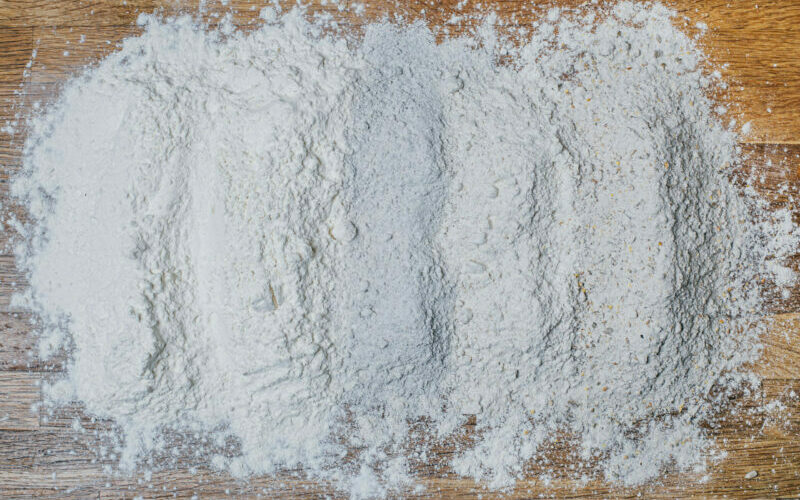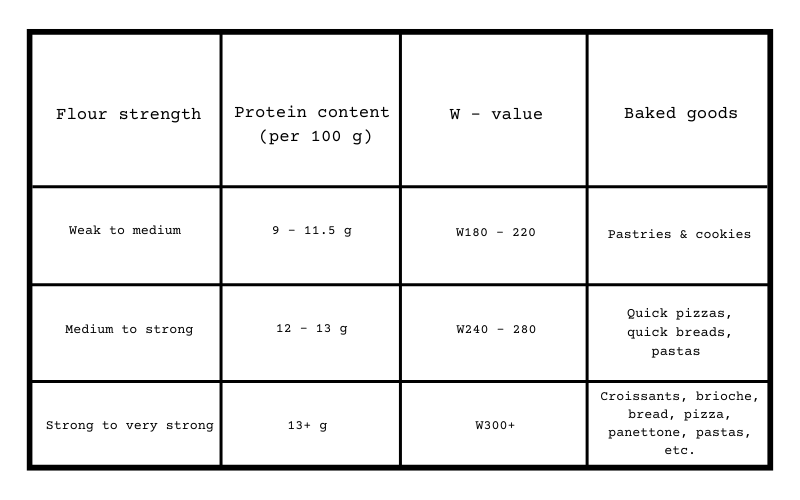Flour
There are so many varieties of flour that it is easy to get intimidated. This is because we often have no idea what the differences are between all these variations. By having a little basic knowledge, you can already make a better choice from amongst the large amounts of flour! So let’s dive into the world of flour to find out which flour is best for what you want to make.
Flour is a powder made by grinding raw grains. While any grain and seed can be turned into flour, the most common variety of flour is the wheat grain. Like most natural wheat grains, it consists of three main components: bran, germ, and endosperm. The protective outer layer is called bran. The grain’s seed is called the wheat germ. Finally, there is the main food source, known as endosperm. The endosperm is basically just white flour and this is ultimately extracted from the grain from which the flour is made. White flour is made of the endosperm. Whole wheat or whole grain flour, as the name implies, uses all the grain. There are two types of grain: a hard and a soft type. In general, hard wheat has a higher gluten and protein content and is a common ingredient in bread, pizza, and pasta. Soft wheat has a lower protein content, which is great for flatbreads and pastries.

Flour is the most important element in baking. Depending on the type of flour and its strength, we can produce different types of baked products. But as flour has such a versatile use, it is important to know that each product has its own flour preference. For example, if you want to bake a cake, then you need weak flour. If you want to bake bread or pizza, then you need medium to strong flour. To explain it as simply as possible; the higher the protein content, the more gluten is present in your flour, and therefore the stronger the flour is.
The best flour for pizza is a medium to strong flour. This is because pizza is preferably left to ferment for a longer period of time. These types of flours can withstand longer fermentation times. If you use, for example, a weak flour, you will notice that your pizza does not rise nicely and collapses quickly, and it can be very difficult to work with as it may tear more easily. To find out whether the flour is weak or strong, read the protein content on the back or side of flour packages. Or if there is a W-value written on the package of flour, you can also find out what the strength of flour is
Table 1 shows various W-values and protein contents that tell you which baked goods you can use these types of flour for.
Table 1: Flour guide.

If you are going to make a Neapolitan pizza, I suggest using a medium-strong 00 flour. This is a very finely ground white flour that can only be obtained after a long and slow process of grinding and sifting the wheat. The ‘00’ specifies how fine the flour is milled.
00 flour covers the whole protein range, from very low to very high. It can be very weak or very strong or somewhere in between, but the fineness of the flour will always be more or less the same.
It is resistant to burning at the high temperatures at which Neapolitan pizzas are cooked. On the downside, this ability to resist burning at high temperatures means that type 00 does not brown well at lower temperatures. If you would like to bake the pizza in a conventional oven, you might need to add some sugar or malt powder to the dough to give your pizza crust a nice brown color. You could also use American-produced flour, which often has a higher sugar content and is better suited for pizzas baked at low temperatures. For a New York style or Sicilian style pizza, this flour is definitely the right choice.





